
Research Projects*
*Please note that research projects which are covered by confidentiality agreements are not shown
Optimization of Powered Ankle Prosthesis Controller
The purpose of this project was to use a simulated annealing algorithm in combination with a forward dynamics framework to determine the optimal torque output by the powered ankle throughout stance. The optimal torque was defined as one that minimized biomechanical measures of demand (i.e. joint loading, muscle forces, and metabolic cost) or one that maximized indicators of balance control.


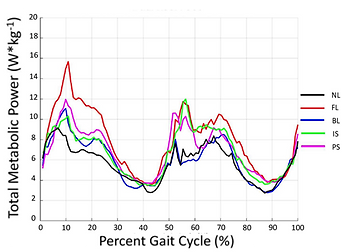
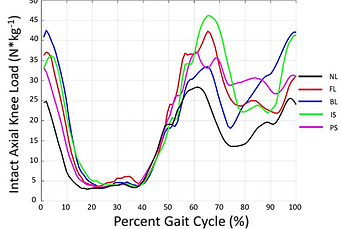
Effects of Prosthetic Foot Type and Load Carriage Position on Measures of Biomechanical Demand
This study used a modeling and simulation framework in OpenSim to evaluate the effects of five different load carriage positions (no load; 30 lbs carried as a front load, back load, intact-side load and residual-side load) and five different commercially available prosthetic feet (a passive clinically prescribed foot, PR; a passive foot one category stiffer than prescribed, SF; their prescribed foot with a heel stiffening wedge, HW; and a dual-keel foot, DK) in 8 participants (200 simulations total). A generic musculoskeletal model (OpenSim gait2392) was modified to create a 3D transtibial amputee model. To model the various loading conditions, a body was attached by a spring-damper interface to the front, back, intact- and residual-side of the torso segment of the model. For each subject, a gait cycle was simulated from each loading and prosthesis condition using OpenSim 4.1
The Influence of Load Carriage and Prosthetic Foot Type on Individual Muscle Contribution to Body Support and Forward Propulsion During Walking
The purpose of this study was to use modeling and simulation to investigate the effects of a range of prosthetic feet and load conditions on individual muscle and prosthetic foot contributions to body support and forward propulsion. An induced acceleration analysis was used to determine muscle and prosthetic foot contributions to support and propulsion.


The Influence of Load Carriage and Prosthetic Foot Type on Individual Muscle Contribution to Balance Control
The purpose of this study was to use modeling and simulation to investigate the effects of a range of prosthetic feet and load conditions on balance control. The measure of balance control investigated was range of whole-body angular momentum in both the frontal and sagittal planes. A larger range (particularly in the frontal plane) is indicative of reduced balance control. The same loading and prosthetic foot conditions were investigated as in the two projects mentioned above.
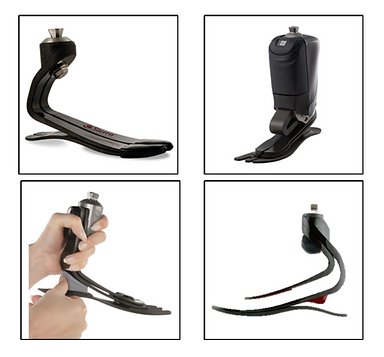
Biomechanical Effects of Multiple Pregnancies and Pregnancy Progression
This case study followed a pregnant individual across two subsequent pregnancies. The purpose of the study was to investigate whether biomechanical measures changed as pregnancy progressed, and whether they were the same in the second pregnancy relative to the first. The primary measures investigated were gait asymmetry, and measures of balance control such as whole-body angular momentum. This study highlighted that the addition of an anterior load during pregnancy, in combination with hormone-induced increase in musculotendon laxity, may exacerbate gait asymmetries that were present prior to pregnancy, thus potentially increasing fall risk during pregnancy. However, pregnancy did not result in systematic changes in measures of balance control.
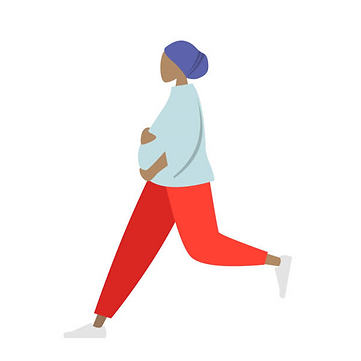
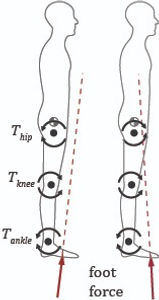

Evaluation of Novel Balance Characterization (zIP) Method in Quiet Standing
Humans use a complex coordination strategy to maintain standing balance. The ground-reaction force between the foot and the ground results from the coordination of the hip, knee, and ankle torques in the sagittal plane. On average, the force vector typically intersects the center of mass (COM), permitting the individual to stay upright. However, when looking at only certain frequency bands of the center of pressure data, you find that the intersection point is above the COM at lower frequencies and below the COM at higher frequencies. This produces the zIP curve (frequency vs. vertical intersection height) which remains typically unchanged in healthy individuals. Intriguingly, the curve shifts in certain clinical population, suggesting an altered joint coordination strategy. The first component of this project was to compare this novel method to other balance characterization methods. The second component was to identify the effects of altered visual and proprioceptive feedback on the zIP curve. An extension of the project involved evaluation standing balance in children with ASD, who often display reduced balance and increase fall risk.